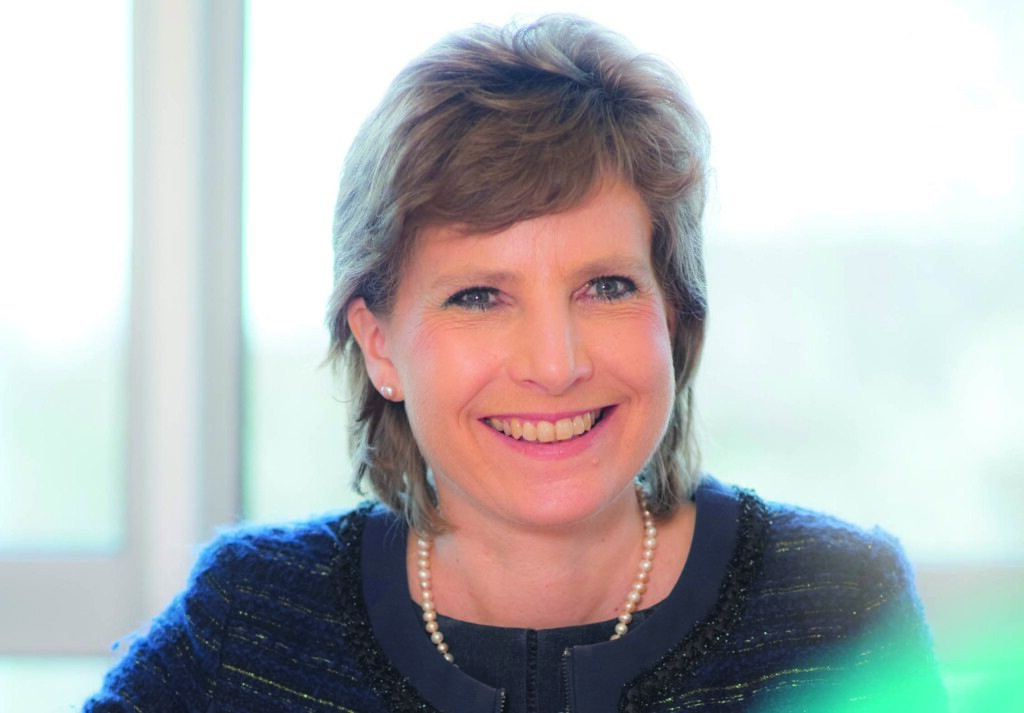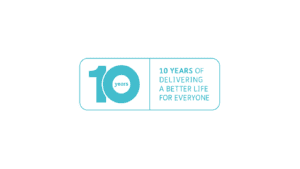Social Care is going through one of its most challenging periods in history. Everyday frontline workers put themselves at risk to help support the most vulnerable amongst us. Care agencies are doing everything they can to support their staff. However with increasingly vulnerable service users, limited funding and PPE supply chain frustrations, it is a Herculean task.
The COVID-19 crisis has made the public far more aware of social care’s structural issues. And yet, these are issues over which the United Kingdom Home Care Association (UKHCA) has been hounding the government for years. As the sector’s cornerstone of information and representation, the UKHCA fights a daily battle to support social care’s critical providers. We spoke with Dr Jane Townson, CEO of UKHCA, to find out more about social care’s access to funding and PPE during the current pandemic.
Funding
The UKHCA has been a longstanding bulwark of the care agencies that constitute its membership. Right now the organisation’s primary focus is securing funding and PPE for social care during COVID-19. Dr Jane Townson explains:
“(The Government’s) £1.6 billion is supposed to be to strengthen care for vulnerable people. Some of that has got to be used for homelessness, but the bulk of it should be for frontline social care services. How much of it has actually made its way to any social care providers yet? Virtually none. And that’s what we’re spending most of our time trying to sort out.”
Increasing Costs
Things have become particularly tough for an industry that was already running on empty. A National Living Wage increase of 6.25% kicked in on April 1st. Yet according to reports from UKHCA members, 60% of local authorities are yet to reflect that increase in the rates they pay to providers for delivering care. On top of that, the arrival of COVID-19 has further exacerbated social care’s lack of funding.
“The amount local authorities pay for homecare is not enough in general,” Townson says. “Many companies are struggling with extremely low margins. One CEO was telling me this morning that he’s calculated that the cost of PPE alone is an extra £2.50 per hour of care delivered at the moment. In his case the sick pay is coming out at £1.16 per hour extra. And his absence rates aren’t as high as they are in other companies. That’s already £3.66 an hour more than normal, never mind the increase in the National Living Wage.
“The UKHCA calculates the UK minimum price of homecare. We calculated from the first of April that the minimum price would be £20.69 an hour. We captured some data from our members on the week of the 23rd of March. The average fee rate was coming out at £17 pounds. So they are already £4 beneath where they need to be just to be compliant with National Living Wage. Never mind talking about extra cost on top.”
Working Towards a Solution
UKHCA has been working closely with the Local Government Association (LGA) and the Association of Directors of Adult Social Services (ADASS) to try and address the most pressing issues.
“At the beginning of March, we emailed them and said: ‘Would you be willing to do some joint guidance for local authorities on how to support providers during COVID-19?’ They agreed and some guidance was issued on the 13th of March. That went to all local authorities…which mostly ignored it”, Dr Townson said.
The guidance focussed on three key areas. First, a fee uplift to cover the increase in the national living wage. Secondly, to start paying providers on planned commission work, rather than in arrears as standard. Thirdly, to provide a temporary uplift to cover the additional costs that have arisen due to COVID-19. These would include: PPE, sick pay, as well as remote working and travel costs where relevant.
Local Authorities
Trying to get Local Authorities to pay attention to their guidance has proven difficult for UKHCA.
“Local Authorities have been given the money – it’s sitting in their bank accounts,” Townson says. “But they don’t want to send it out to providers for reasons best known to themselves. We’ve been putting a lot of pressure on LGA and ADASS to try and get them to force their members to do what’s right. But they say they’re a member organisation: all they can do is give them strong guidance. They (LGA and ADASS) said they want the opportunity to work with their members first. They’ve said, ‘give us a list of the ones that aren’t behaving’. The Minister for Care is also very actively engaged with this issue.
“So the plan is: raising concerns with ADASS and LGA about the councils that are doing nothing. If that doesn’t work, go to the Minister for Care in the Department of Health to personally phone them up. Then if that doesn’t work we go to the media to name and shame them. We have already given notice on everybody that the timescale for that process isn’t going to be a long time. It’s already the 9th of April. If the National Living Wage went up on the first of April, what possible excuse is there for them not addressing that?”
An Urgent Need
That may seem like a drastic plan, but it could be exactly what is called for in our drastic circumstances. And Townson certainly sees the urgency:
“The provider market could collapse quite quickly because it can’t sustain these kinds of additional costs and be able to meet payroll. Especially with the fee rises they’re paying. No money means insolvency, and then (issues like) PPE become irrelevant because everyone’s business has collapsed. This really, really needs to be sorted.”
PPE Supplies
PPE shortages have been reported from the majority of care agencies. A BBC poll from last week found 80% of the 500 care agencies they surveyed are running out of supplies. In response, the Government is implementing some solutions.
The initial step was a letter sent to providers last week from the Department of Health. It outlined four companies who had been instructed to exclusively supply social care. The demand, of course, quickly went off the scale.
“The inevitable happened,” Townson explains, “their lines got jammed. They couldn’t reply to emails and phone calls. Anyway, they’ve hardly got enough supplies as it is. So they have apparently been rationing what they give to care providers to 300 masks each. But they are also insisting on minimum orders so people are having to spend money on other stuff that they don’t need just to get the 300 face masks, so that’s not very good.”
Parallel Supply Chain
The government is also preparing a parallel supply chain to the standard NHS supply chain to meet the urgent requirements of social care. The NHS Supply Chain set up this joint effort between them, the Ministry of Defence, Unipart Logistics and supported by Clipper Logistics. It will be for both acute and community hospital trusts and mental health and ambulance trusts. On top of that, it is also meant to service social care.
“The supply chain isn’t up and running yet,” Townson says. “We learnt on Tuesday that they’re going to requisition all of the PPE that’s currently in the ‘business-as-usual’ supply chain with the business-as-usual suppliers. So all of the PPE suppliers that normally supply homecare companies are going to find they have no stock because it’s all been requisitioned.”
Far from being a logistical solution, Townson sees a logistical nightmare:
“I have no idea how that’s going to work: 18,000 care agencies all trying to register for an account, ordering stuff and then getting it delivered. I just don’t know how that can be done, we’ll see, but that’s what they’re doing.”
Emergency Drop Option
The third step the Government has taken in response to PPE shortages is an emergency drop to local resilience forums. This will be a route by which providers can access PPE. However, UKHCA has been told that this will be ‘very much emergency stock’. Which, of course, raises the question of what is an emergency, and how much stock does it warrant releasing?
“They said: ‘Oh yeah it’s going to be like, nine and a half million face masks, and 8 million aprons’,” Towson recalls. “Well, that is only going to last 2-3 days!”
There is no completely accurate data available on the number of people receiving private care. Based on available information, the UKHCA estimates there are 1,000,000 people receiving care at normal times. These people would normally receive between 1-4 visits a day. Providing care to people at this rate would quickly exhaust the 7.8 million pieces of PPE the government has already provided, leading either to equipment re-use (and the possibility of viral transfer), or to care workers delivering care whilst unprotected themselves.
Understanding the Challenge
It’s clear, however, that despite logistical difficulties and financial irregularities, these are challenging times for all involved. While Dr Townson is critical of the support Local Authorities have provided up to this point, she appreciates their position.
“If you think about it Local Authorities have a lot to do generally. They are worried about things like food, homelessness, schools, isolation. There are a lot of things they’re responsible for.
“I don’t think it’s that they’re not working hard, I just don’t think that they’re focussed on social care. We have heard some good stories. In Carmarthenshire, they have offered an inflationary uplift for providers. They’re also paying on commissioned care from a particular date in March. Additionally for every hour of care delivered they’re paying a pound an hour extra to help cover the extra costs. Some of them are doing the right thing, but at the moment the vast majority of them are not.”
Driving Action
UKHCA has grown accustomed to fighting the Government for change on behalf of social care providers. But what was once a more private crusade has become a very public battle. Dr Townson believes that this will raise public awareness of how vital social care is to our social fabric:
“I think people are waking up to realising what’s going on,” she says.
COVID-19 has brought to the fore issues that those within social care have been anticipating for years. Voices for change have long been loud, but little been heard. The new attention that social care is set to receive is welcome, although there are very real fears that the sector will continue to remain ‘the Cinderella service’
Though as Dr Townson points out:
“At least Cinderella had an apron.”








